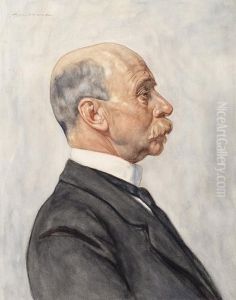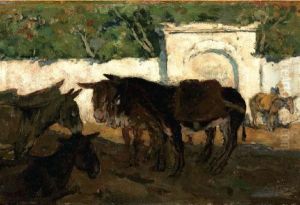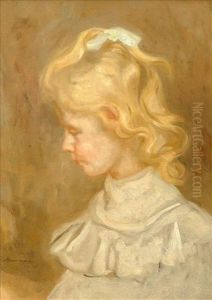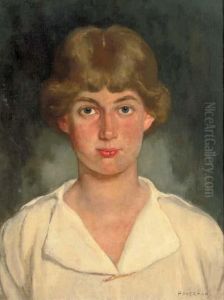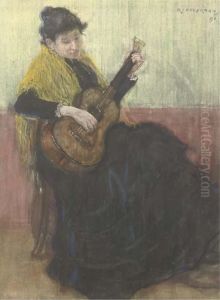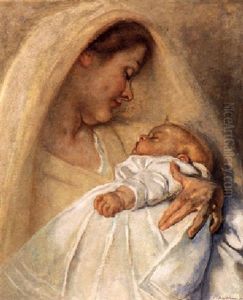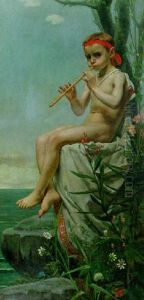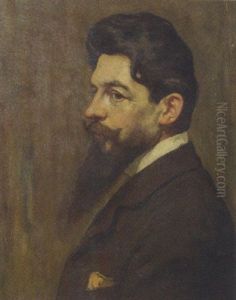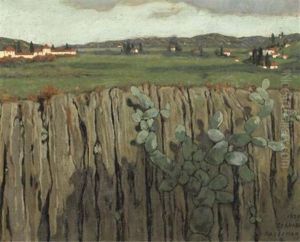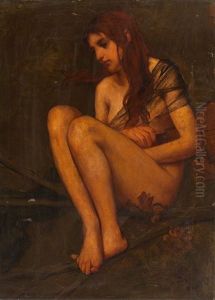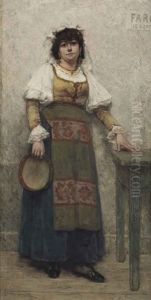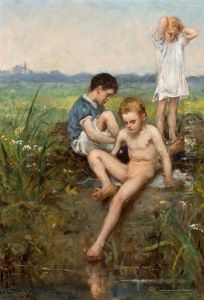Hendrik Johannes Haverman Paintings
Hendrik Johannes Haverman was a distinguished Dutch artist, born on June 23, 1857, in Amsterdam, Netherlands. He was prominently known for his contributions as a portraitist, watercolorist, and sketch artist. His artistic journey began in earnest when he pursued his education at the Rijksakademie van beeldende kunsten (State Academy of Fine Arts) in Amsterdam, and later, he furthered his studies in Brussels, which was a vibrant art center during the late 19th century.
Haverman's work was heavily influenced by the prevailing art movements of his time, including Impressionism and Realism. He was adept at capturing the essence of his subjects, often focusing on the societal elite and cultural figures of the Netherlands. His portraits were celebrated for their depth, sensitivity, and the ability to convey the personality of those he painted.
Throughout his career, Haverman actively participated in the artistic community, contributing to exhibitions and cultural discussions. He was a member of Arti et Amicitiae (a society for visual artists and art lovers in Amsterdam) and the Pulchri Studio in The Hague, two of the most prestigious art societies in the Netherlands. These affiliations provided him with platforms to showcase his work and interact with contemporaries, thus solidifying his position within the Dutch art scene.
In addition to portraits, Haverman's oeuvre includes landscapes and still lifes, though these genres were secondary to his primary focus. His landscapes often depicted scenes from his travels and the Dutch countryside, characterized by a keen observation of light and atmosphere, reflecting the influence of Impressionism.
Hendrik Johannes Haverman's legacy is preserved through his contributions to Dutch art, particularly in portraiture. He passed away on October 11, 1928, in Amsterdam. Today, his works are part of collections in major Dutch museums, where they continue to be studied and appreciated for their artistic merit and historical significance.




